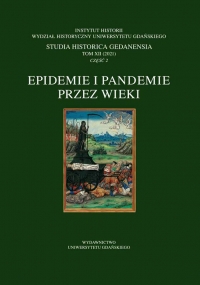Mit pestilentia manufacta w XVI–XVIII w.
(wybrane przykłady)
Thy Myth of pestilentia manufacta between the XVIth and the XVIIIth centuries (selected examples)
Author(s): Katarzyna Pękacka-FalkowskaSubject(s): History, Social history, Modern Age, 16th Century, 17th Century, 18th Century
Published by: Wydawnictwo Uniwersytetu Jagiellońskiego
Keywords: plague; plague smearers; plague spreaders; early modern period
Summary/Abstract: In the early modern period, in various European countries, both Roman Catholics and Protestants provoked a new version of an old myth of “manmade pestilence”. The myth originated in Antiquity, and the term pestilentia manufacta was coined by Seneca in his “De Ira”. Yet, it was only the XVIth century that it started to evolve and rapidly spread throughout Europe. The myth provoked plague-inspired hatred and persecution that was aimed against people from different social echelons. Generally, the persecuted were the poor employed by local authorities as “low functionaries” during epidemics, above all, gravediggers. Nevertheless, priests, barber-surgeons, and merchants could also be considered plague-spreaders or plague-smearers. This article examines selected cases of presumed plague spreading in Western European cities in the XVIth and XVIIth centuries and three cases from XVIIIth century Poland, two of which have so far been unknown to scholars
Journal: Studia Historica Gedanensia
- Issue Year: 2/2021
- Issue No: 12
- Page Range: 210-227
- Page Count: 18
- Language: Polish

